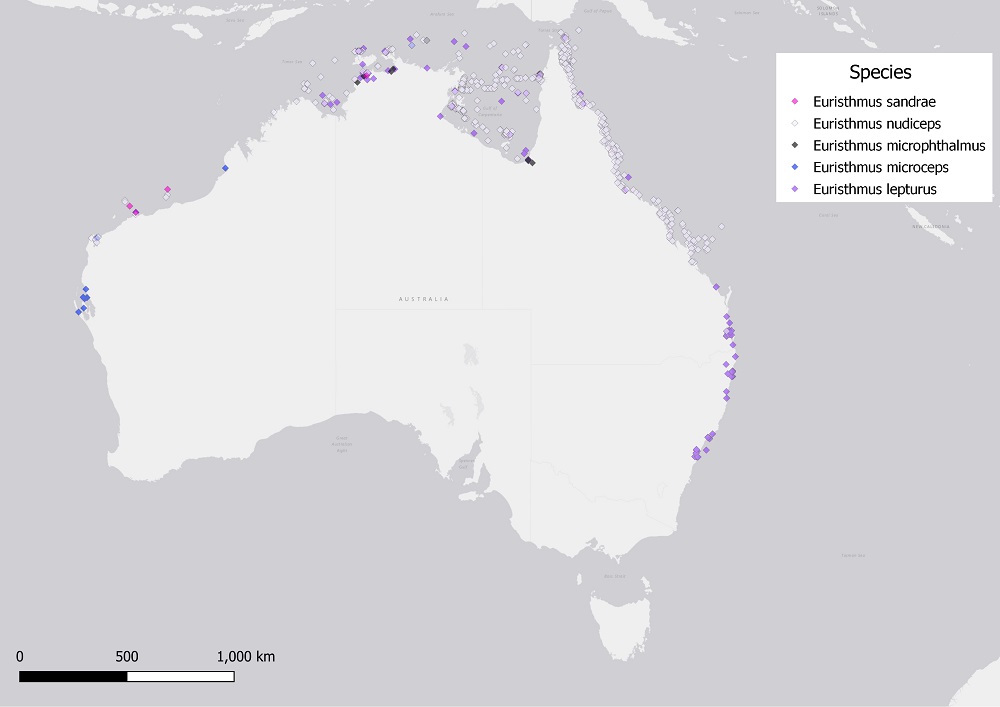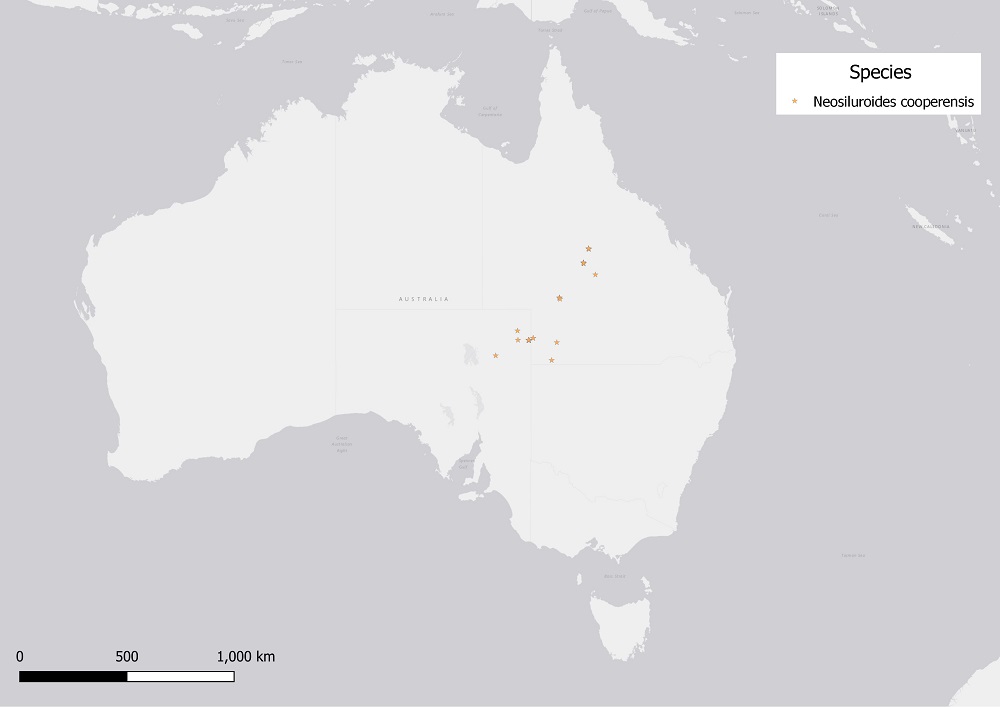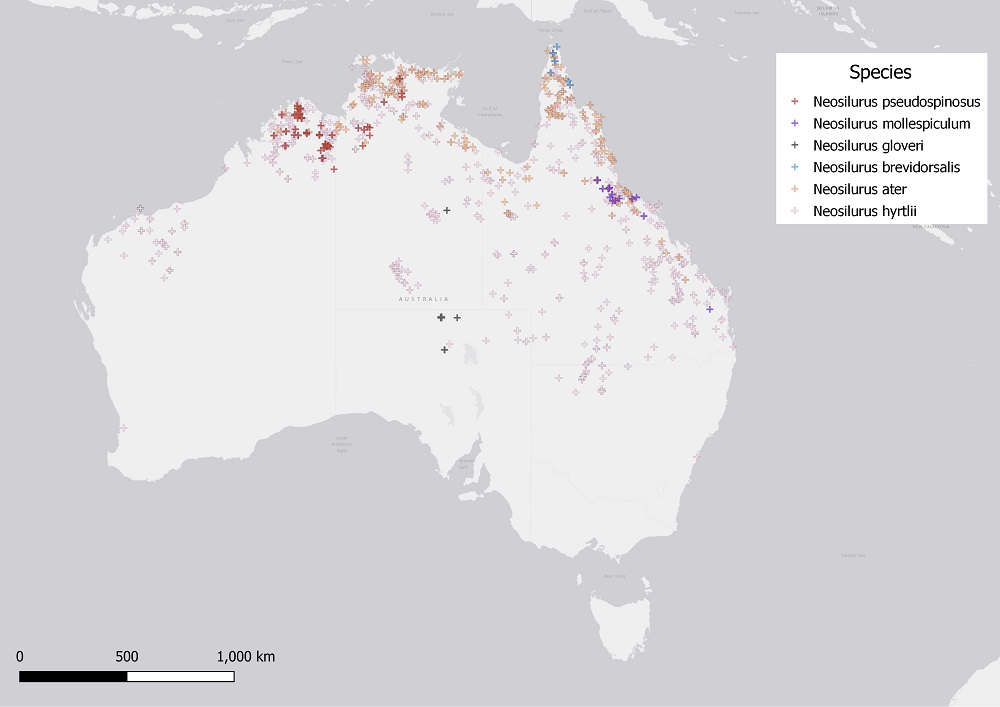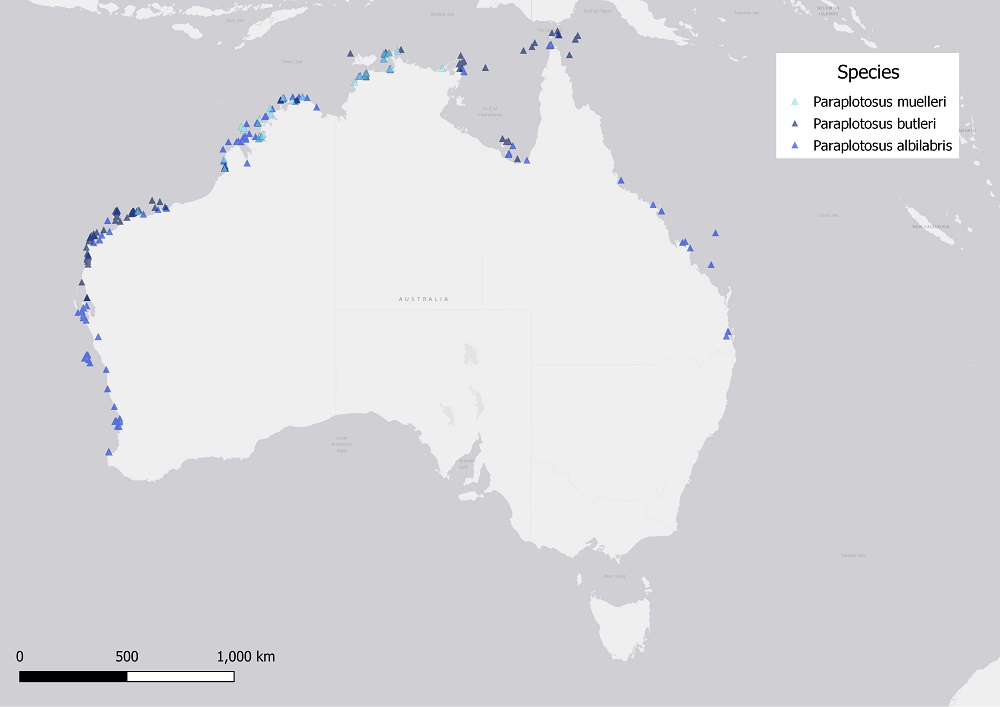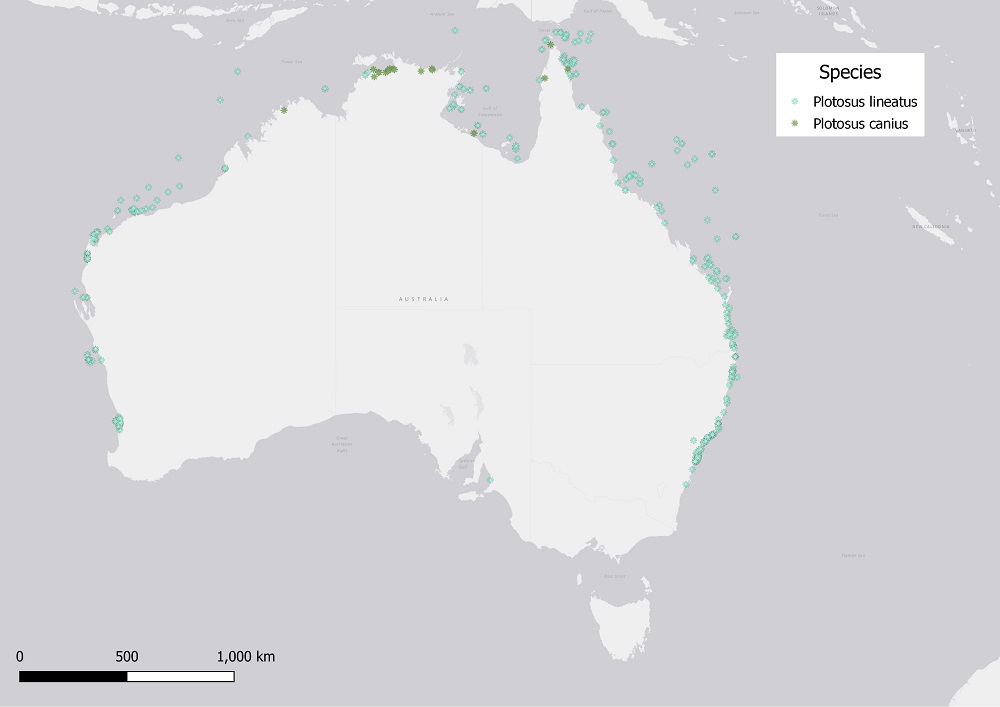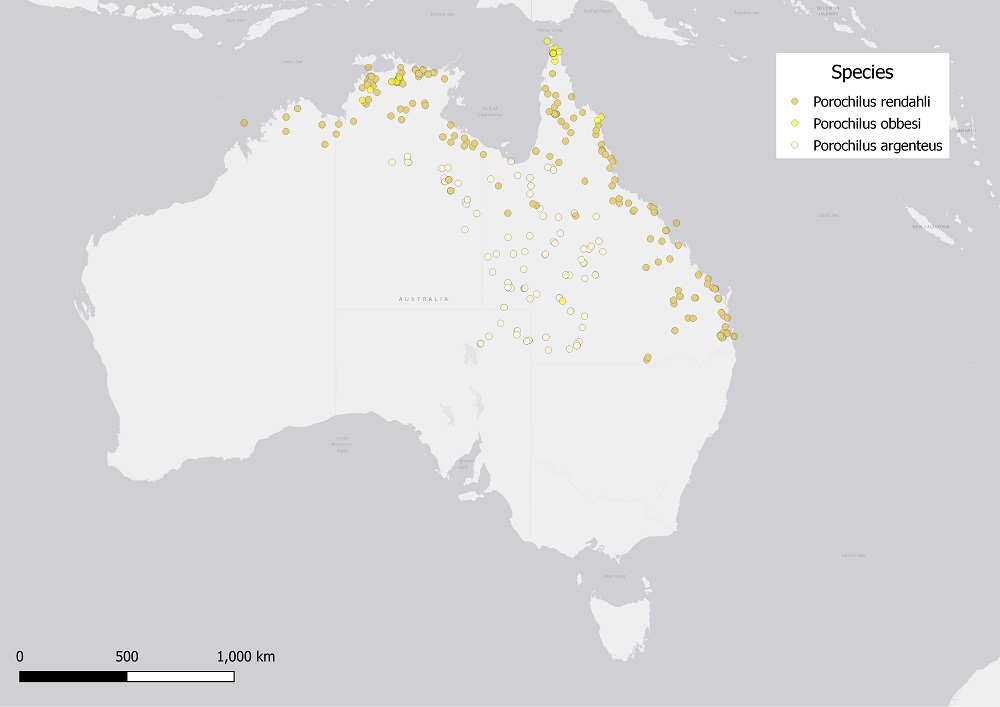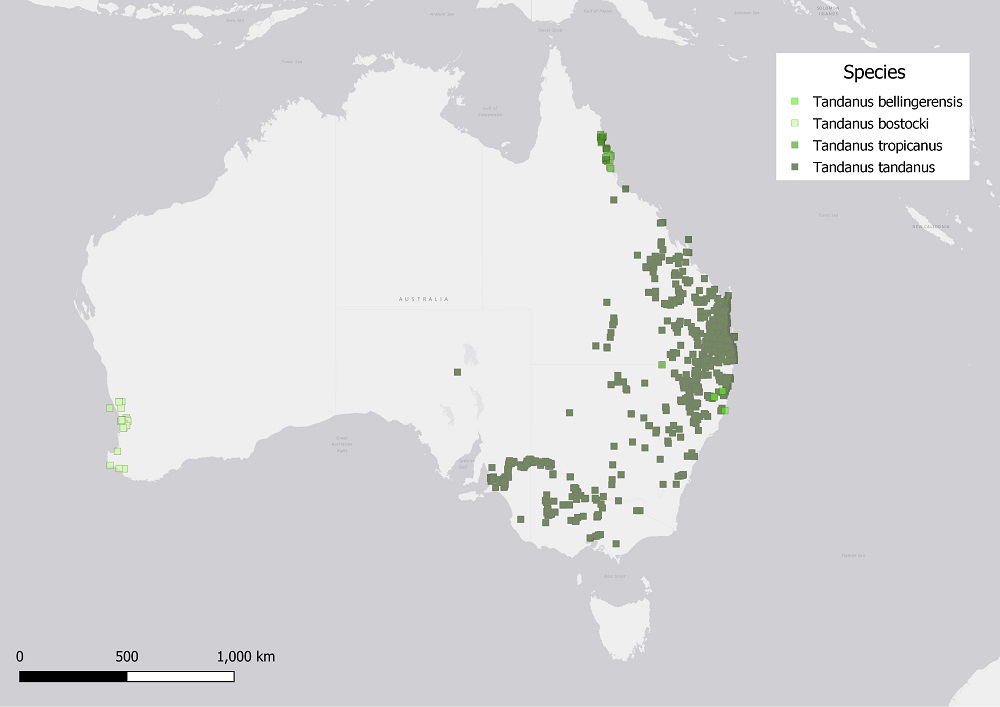Eeltail Catfish (Plotosidae)
Australia
24/01/22
What comes to mind when you think of catfish?
For a fish rarely seen, many have strong opinions on the humble catfish. Often regarded as a dirty fish, these highly adapted fish are a lot more than just bottom feeders. Their sensory barbels are packed with hundreds of thousands of taste buds, allowing them to take the pressure off the eyes while hunting. Without the need to be in sight to find food, many have become incredibly cryptic. For this reason, many catfish are almost never observed, and as a whole group they are seen a lot less than other teleost fishes.
The Plotisidae are a family of catfish found across the Indian and Pacific oceans, with a high species diversity in Oceania. More than half of all species (26 of 42) occur in Australia. They can be found in fresh, brackish and marine waters, however all freshwater species are endemic to Australia and New Guinea. In Australia, most eeltail catfish are freshwater species, which have diversified across the country.
These catfish are commonly called eeltail catfish, and as the name suggests, they do look quite eel-like with an elongated tail of more than half their total body length.

To swim, they undulate their tail in a snake-like manner, and are quite beautiful when seen swimming in groups. One species, the marine Striped Catfish (Plotosus lineatus) even schools in a mesmerising ball of tightly knit juvenile fish. Freshwater species are also fairly social, especially when young, and many prefer to cruise along slow moving or still waterbodies in loose aggregations. They are just at home in murky, turbid water as they are in clear water - thanks to their sensory barbels, great hearing and strong sense of smell.
These catfish even have an additional sense: electroreception. Their bodies are covered in ampullary pores, with the greatest concentration around the head and base of the fin rays. These lead to ampullary organs, which work together to detect weak, low frequency electric fields such as those generated by the muscle contractions of prey. It's also believed that these electroreceptors are used to sense the presence of potential predators and recognise others of the same species. Interestingly, marine Plotosids have longer ampullary ion canals with far more receptor cells. This is a result of habitat salinity, with the conductivity of saltwater leaving marine fish more prone to ion fluxes - which would tamper with more delicate ampullary systems.
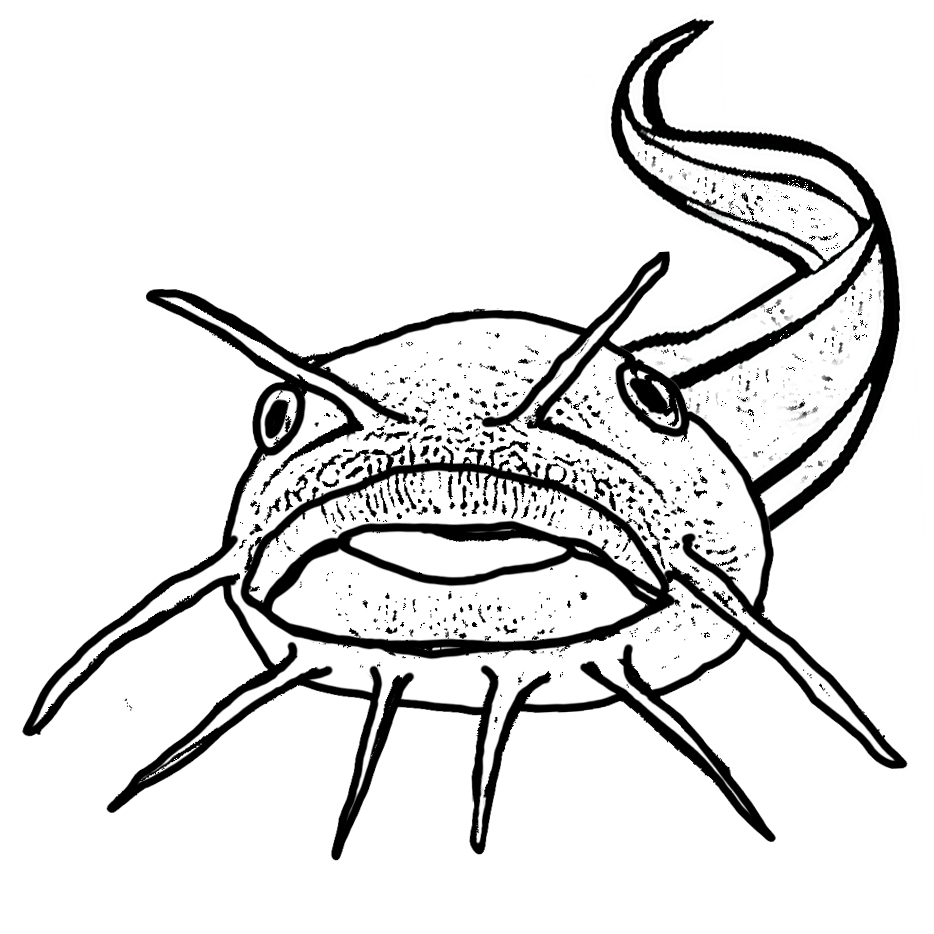
Plotosids therefore usually seek out any unfortunate prey that happened to come out of hiding much quicker than other fish in the area. While most feed throughout the water column, some feed only from the substrate, like the Toothless Catfish (Anodontiglanis dahli) which thrusts its long snout into the sand to grab worms and crustaceans. Most Eeltail catfish are hunters more than scavengers - with a diet including small fish, crustaceans such as shrimp and yabbies, insects, snails and worms.
Many species are also quite good parents. Tandanus species in particular construct a large, donut-shaped nest up to 2m in diameter, bulldozing the area with their flat head and lining the center with pebbles which it picks up with its mouth.
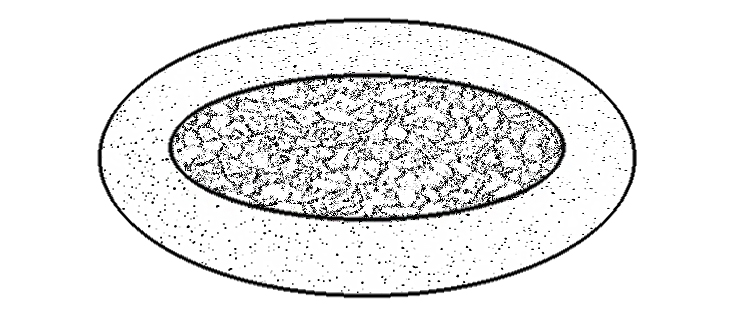
The male then guards the nest until the eggs hatch. Plotosus species have a similar ritual, albeit with smaller nests in more sheltered area. The inland Cooper Creek catfish (Neosiluroides cooperensis) which lays a small number of large eggs, may potentially also guard a nest. Neosilurus scatter their eggs in fast flowing water over gravel substrate, while Porochilus species are thought to undertake substantial migrations to river deltas and lowland lagoons to spawn.
Like most catfish, these fish have a high resistance against infectious diseases, owing to their thick antimicrobial mucous lining as they are not scaled or armoured. They are definitely as slippery as an eel(tailed catfish)...
That isn't where the story ends however, as they also produce a different kind of mucous - one far more notorious. From glands at the base of the dorsal and pelvic fins, a highly venomous compound is produced in the form of a proteinaceous mucous (termed an ichthyocrinotoxin). This then travels to coat the set of particularly nasty serrated and barbed spines hiding within each fin. These can lock into place, sticking outwards ready to defend themselves, their nests or their territories.

Even worse, these spines easily break off after contact, leaving a sleuth of toxins to work their magic in your (or an attacking fish's) body. Characterised as 'plototoxins', they contain compounds such as:
Depending on how badly you were wounded, such an injury can be very debilitating. Along with intense pain, effects include tachycardia (a racing heart rate), vomiting, unconsciousness, and even tissue necrosis. Luckily no fatalities have been recorded, although some species such as Plotosus lineatus are considered theoretically lethal. Freshwater species are not as dangerous however, with their weaker venom, the pain usually only lasting an hour or two.
Distribution maps of the 9 Australian genera of eeltail catfish
Sometimes the best way to get exactly what you're looking for is simply to make it yourself. Here you can easily compare geographic ranges of the Australian Plotosid genera. Species locations were sourced from the Atlas of Living Australia, and were then processed using QGIS software. Individual species can also be distinguished by colour for each genus.
Anodontiglanis (toothless catfish), Neosiluroides, Neosilurus, Porochilus(pore-lipped catfish) and Tandanus (tandans) are all freshwater genera, while Cnidoglanis (cobbler), Euristhmus (slender eeltail catfish), Paraplotosus, and Plotosus (stinging catfish) are brackish/marine species.


